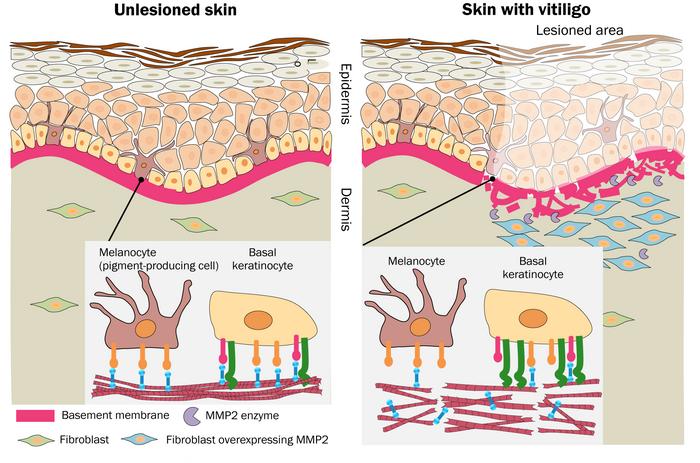Exactly what causes the loss of pigmentation in vitiligo has been unclear, but now, an Osaka Metropolitan University-led team has uncovered clues to the mechanism behind the disorder.
Disruptions to the basement membrane zone between the epidermis and dermis could be making it harder for pigment-producing cells to adhere to the affected zone, according to research in The Journal of Pathology.
The team also discovered an overexpression of matrix metalloproteinase 2 (MMP2) in vitiligo-affected skin. Too much MMP2 might be causing the disturbance to the basement membrane. An experiment using model mice with vitiligo-like depigmentation showed recovery of pigment-producing cells when MMP2 was suppressed.
“The results of this study potentially provide a new method for the treatment of vitiligo,” says study author Lingli Yang, a specially appointed Associate Professor at Osaka Metropolitan University’s Graduate School of Medicine in Japan, in a news release. “In particular, by suppressing MMP2, the hope is that pigment-producing cells will return to the skin.”
PHOTO CAPTION: A graphical representation illustrates what might be occurring in undamaged and damaged skin.
PHOTO CREDIT: Osaka Metropolitan University


